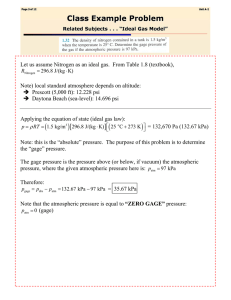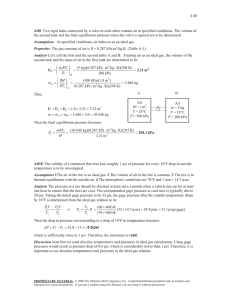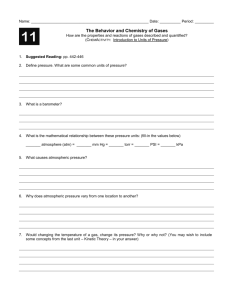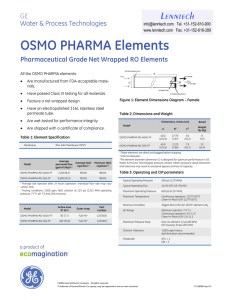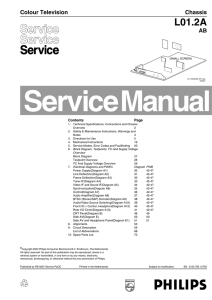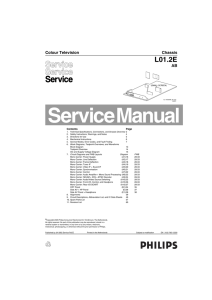Solution
advertisement
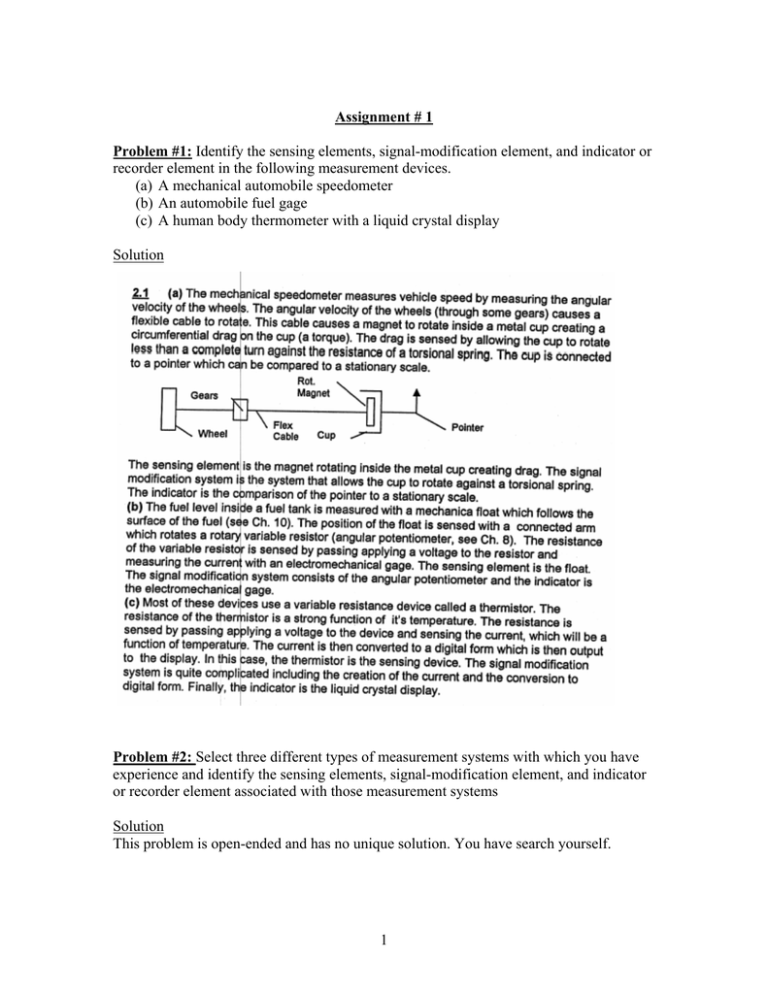
Assignment # 1 Problem #1: Identify the sensing elements, signal-modification element, and indicator or recorder element in the following measurement devices. (a) A mechanical automobile speedometer (b) An automobile fuel gage (c) A human body thermometer with a liquid crystal display Solution Problem #2: Select three different types of measurement systems with which you have experience and identify the sensing elements, signal-modification element, and indicator or recorder element associated with those measurement systems Solution This problem is open-ended and has no unique solution. You have search yourself. 1 Problem #3: Identify which of the following measurement are intrusive and which are non-intrusive. Justify your answer. (a) Measuring a person’s oral temperature with a thermometer (b) Measuring the speed of a bullet using high-speed photography (c) Determining the temperature of a furnace by an optical thermal radiation device (d) Measuring the speed of an automobile with a radar gun Solution Problem #4: You find a micrometer (a thickness measuring device) of unknown origin and use it to measure the diameter of a steel rod that is known to have a diameter of 0.5000 in. You use the micrometer to make 10 independent measurements of the rod diameter, and the results are 0.4821, 0.4824, 0.4821, 0.4821, 0.4820, 0.4822, 0.4821, 0.4822, 0.4820 and 0.4822. Estimate the systematic error and the maximum random error in these measurements. Solution Problem #5: You need to measure a pressure, which has a value between 60 kPa and 100 kPa. Four pressure measuring devices of comparable quality are available: Device A, range 0-100 kPa Device B, range 0-150 kPa Device C, range 50-100 kPa Device D, range 50-150 kPa 2 Which device would you choose? Explain your answer. Solution Problem #6: Digital voltmeters often have a choice of ranges. The ranges indicated on a typical voltmeter are 0-3, 0-30, 0-300, 0-3000 AC volts. The output is represented with four significant digits. Determine the following: (a) Resolution uncertainty for each range (in V) (b) If it has an accuracy of ±2% of full range for each range, determine the absolute uncertainty of measurement in each case. (c) Determine the relative (percentage of reading) uncertainly if, for a measurement of 25 volts, the ranges 30, 300, or 3000 were used. Solution Problem #7: A bourdon tube (a mechanical device to measure gage pressure, the pressure relative to atmospheric pressure), which has a range of 0 to 50 psi, reads +0.5 psi when measuring atmospheric pressure. It is claimed to have an accuracy of ±0.2% of fullscale reading. What is the expected error in measurement of 20 psi in psi and in percentage of reading? How can you reduce the error produced by this gage? Solution 3 Problem #8: A static calibration is performed on a bourdon gage pressure measuring device with a nominal range of 0 to 1 MPa. The results of this calibration are shown in the following table. (a) Plot the data and fit a straight line through them. (b) Using deviation plots, estimate the accuracy and repeatability errors, both as a percentage of the putout span. 4 Solution 5 Problem #9: Explain the usefulness and appropriateness of the concepts of time constant, response time, rise time, and settling time for, (a) Zero-order (b) First-order (c) Overdamped second-order, and (d) Underdamped second-order systems. Solution Problem #10: Answer the following questions: (a) High-intensity discharge (HID) lamps come to full brightness in about 5-10 minutes. A light meter, which can detect instant light level, is used to record the light output of an HID lamp. Is this a static or dynamic measurement? Explain. (b) The pressure inside a car cylinder cycles at 1500 times per minutes at an engine speed of 3000 rpm (revolution per minute). Can a pressure transducer with a response time of 2 seconds resolve the pressure variation? What value response time would you recommend? Explain your answer. (c) A utility meter measures the power draw of a plant every 15 minutes. One of the highest consumers of power in the plant is a 100 kW heater that goes on for 4 minutes every other 10-minute period. Will the meter accurately record the variation in power consumption of this plant? Explain. 6 Solution Problem #11: A thermometer, initially at a temperature of 20 oC, is suddenly immersed into a tank of water with a temperature of 80 oC. The time constant of the thermometer is 4 s. What are the values of the rise time and the 90% response time? Solution 7
